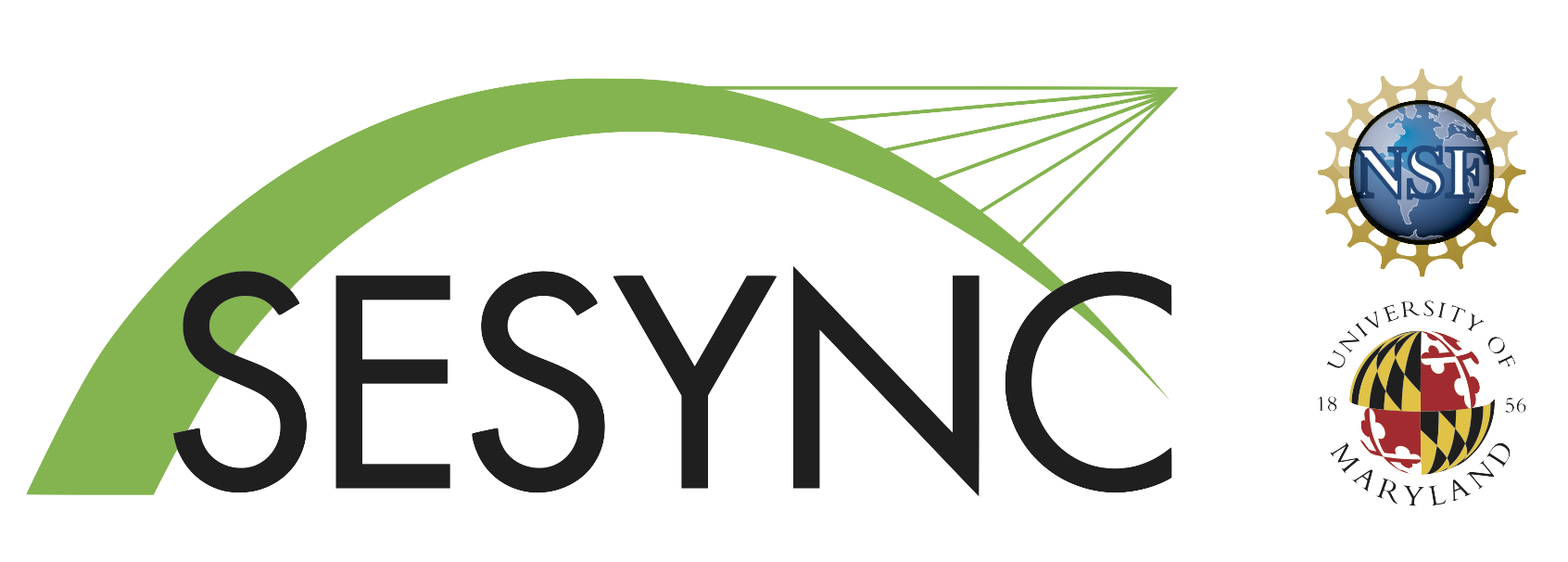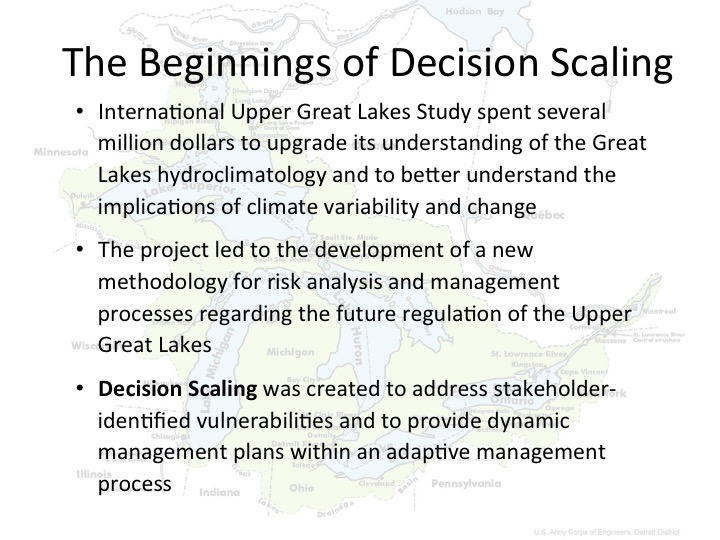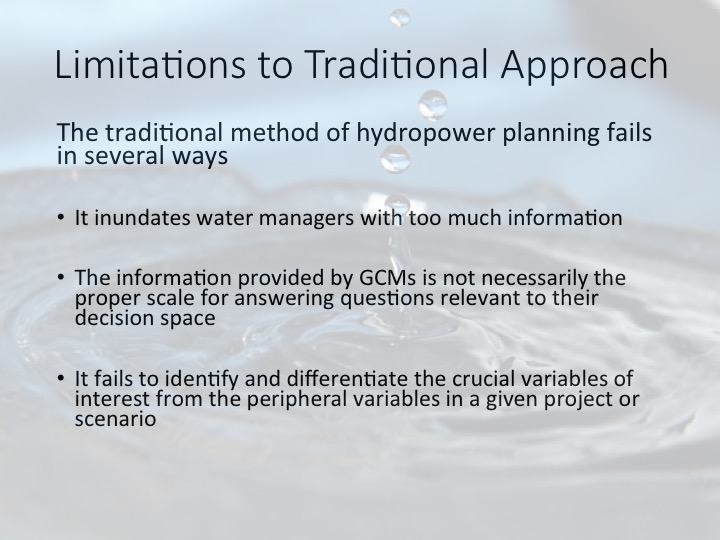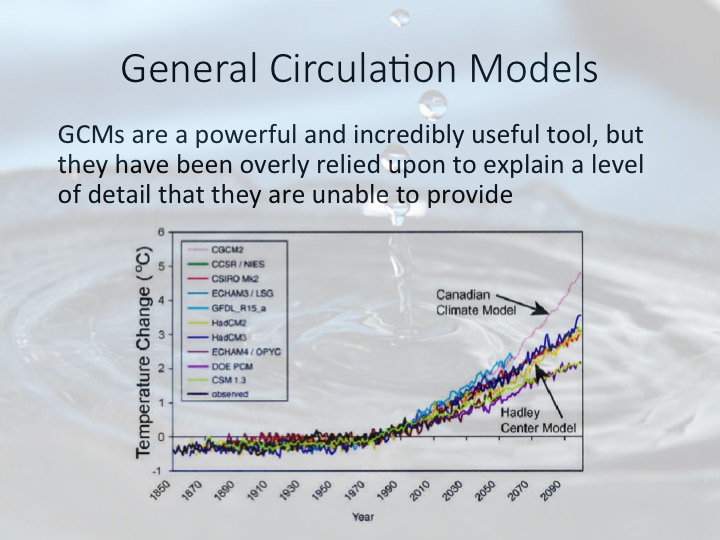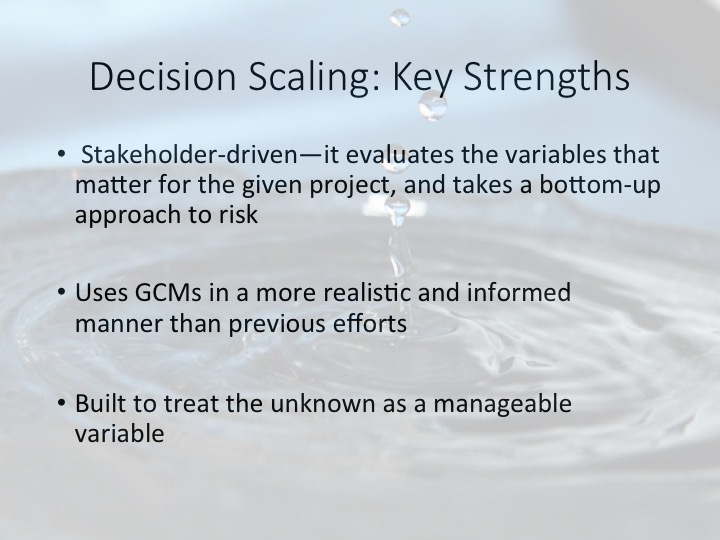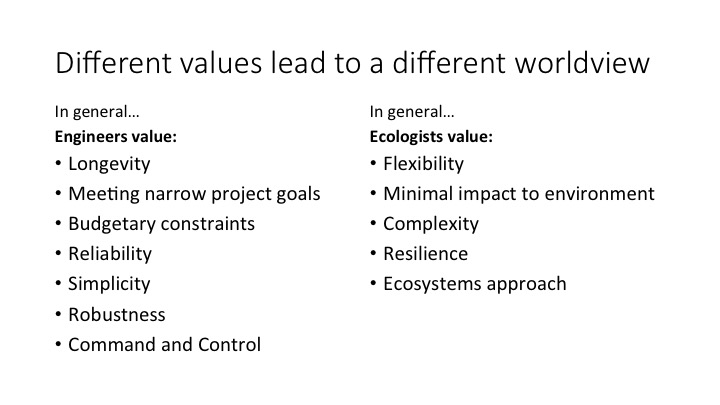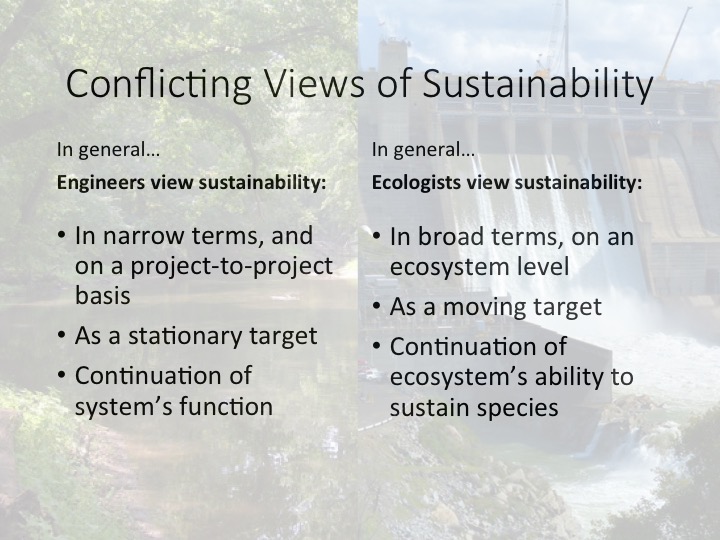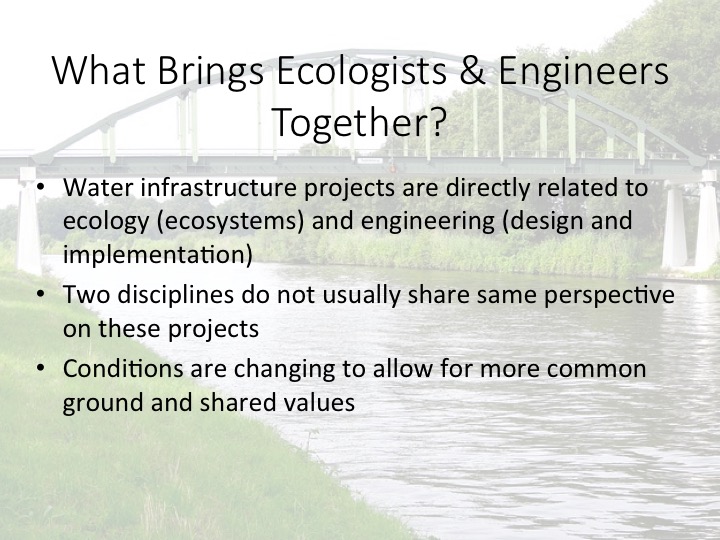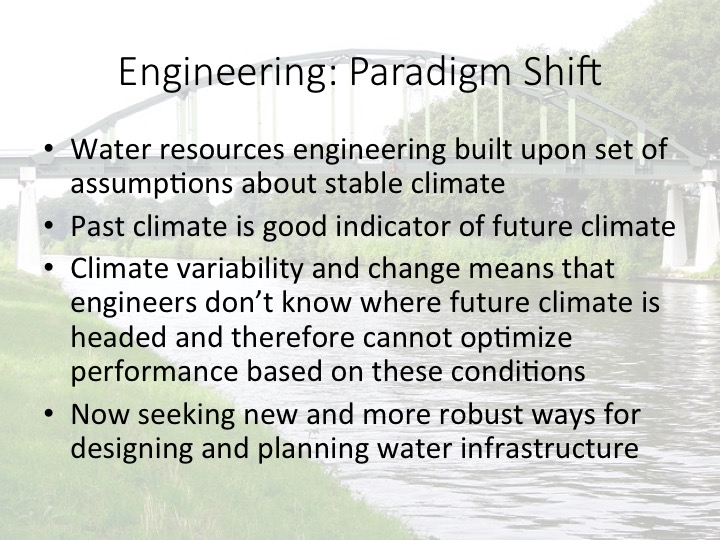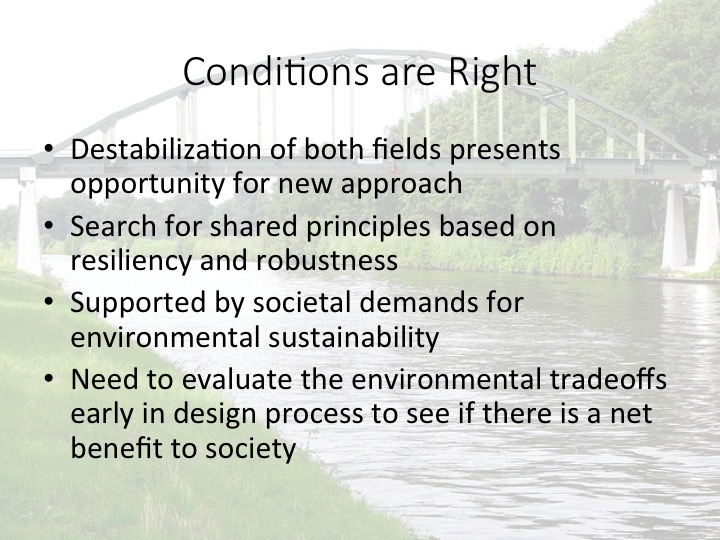Freshwater is perhaps the most vital resource for the 21st century — necessary for almost all aspects of growing economies, traditional livelihoods, and vibrant terrestrial and aquatic ecosystems. But freshwater resources are increasingly difficult to manage as our future becomes harder to predict with confidence: shifting demographics, new patters in climate variability, and rapidly evolving economies.
Many of the decisions we make around water have long-lasting impacts: our decisions are durable, and a bad decision can endure for a long time. New infrastructure, for instance, will last decades, even centuries. Do we know how to think about sustainable water management over those timescales?
This site is intended to showcase a new way for identifying future water risks and then addressing them. First we describe the approach — called decision scaling — which developed within recent years from the engineering community. Then we talk about how long-term sustainability has to include ecosystems within built infrastructure. That approach is called eco-engineering decision scaling, or EEDS.
This site was developed as a result of a Nature Climate Change paper prepared by both ecologists and engineers on EEDS in 2015. The NCC paper can be found on ResearchGate here.
PART ONE
An Introduction to Decision Scaling
PART 2
An Introduction to Eco-Engineering Decision Scaling (EEDS)
Acknowledgements
This website was developed thanks to the generosity of the National Socio-Environmental Synthesis Center (SESYNC), which is a joint initiative of the National Science Foundation (NSF) and the University of Maryland that is dedicated to accelerating scientific discovery at the interface of human and ecological systems. The Alliance for Global Water Adaptation (AGWA) is responsible for the development and maintenance of this site and its content.
Alex Mauroner led the design and layout of the site, along with direction of the videos and other content. Jody Hepperly assisted in implementation throughout. John Matthews was responsible for project conception and facilitation. This webpage was developed using Joe Workman's Foundation theme. We would like to thank his support team for their assistance during site development.
We would also like to thank the following individuals for their invaluable contributions:
- Melissa Andreychek
- Andres Baeza
- Casey M. Brown
- Kathleen C. Dominique
- Theodore E. Grantham
- Marjolijn Haasnoot
- Jonathan Kramer
- John H. Matthews
- Guillermo F. Mendoza
- J. Rolf Olsen
- Margaret A. Palmer
- N. LeRoy Poff
- Patrick Ray
- Mary Shelley
- Caitlin M. Spence
- Eugene Stakhiv
- Robert L. Wilby

